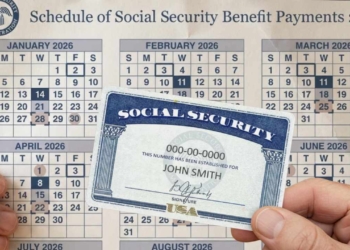For Rich Fowler, a 78-year-old Texas resident, the first day of every month is sacred, and we’ll soon see why: it’s the day his Supplemental Security Income (SSI) payment arrives, the stipend that allows her to pay for her blood pressure medication and maintain the small apartment she owns on the outskirts of Austin.
But 2025 brings a complicated set of dates that already has her and millions of other beneficiaries calculating with pencil and paper. But this year, Rich and millions of other SSI recipients have been confused by changes in the program’s payment dates, which were sometimes brought forward due to a twist intended to avoid delays.
The reason for these changes? Well, deposits are brought forward when payday (in this case, the first) falls on a weekend or holiday, and so the payment is brought forward to the nearest business day, which is usually a Friday.
The updated 2025 SSI schedule
The Social Security Administration has confirmed the schedule for 2025, and it’s riddled with adjustments due to the fact that the first day of several months falls on a weekend or coincides with federal holidays. The rule is clear: when this occurs, payment is moved up to the previous business Friday.
The particular schedule is as follows:
- The February 2025 payment, which was due on Saturday, was brought forward to Friday, January 31.
- The March payment, which corresponds to the 1st (also a Saturday), has been moved to Friday, February 28th.
- The June payment (Sunday, the 1st) will be delivered on Friday, May 30th.
- There’s also a change due to Labor Day, which is September 1st. Therefore, the payment date is moved up to the nearest Friday, the 29th.
- The November payment (Saturday, the 1st) will be made on Friday, October 31st.
This creates an unusual situation: beneficiaries will receive two payments in August (the one for that month on the 1st, and the one for September on the 29th) and then go through September without any SSI payments.
In October, they will receive the regular payment on the 1st and, immediately afterward, the early November payment on the 31st, meaning November will be another month without a new payment.
“It’s a domino effect that confuses many of our beneficiaries, especially older adults who are unfamiliar with these calendar quirks,” explains Anne, director of a nonprofit that advises seniors seeking SSI benefits. “They receive two payments in a row, and some, instead of saving, feel rich and overspend. Then comes the slump of September and November, empty months when the bills pile up.”
The top payments for SSI allotments in 2025
The SSA emphasizes the importance of financial planning and reminds beneficiaries that, even if they receive two payments in the same month, the money should last longer. For Rich, the lesson has already been learned: “The money from August 29th is for September, even if it arrives in August. I set it aside and don’t touch it. That way I avoid problems later.”
The maximum payment for SSI beneficiaries is divided into three categories: first, there is the maximum amount for a qualifying single beneficiary, which is $967 per month. Then, a couple applying jointly can claim a maximum of up to $1,450. Finally, the allowance for an “essential person,” which is for companions who assist beneficiaries in their daily work, is up to $484.







